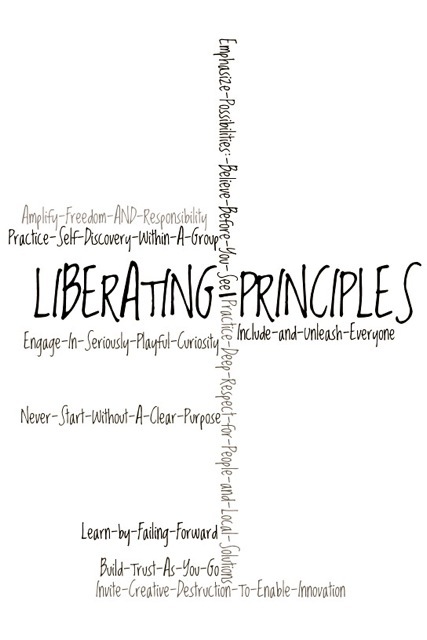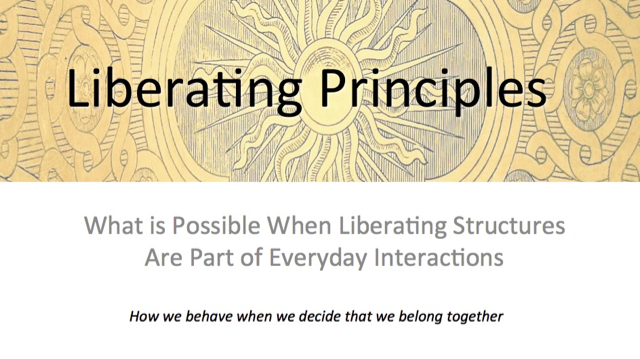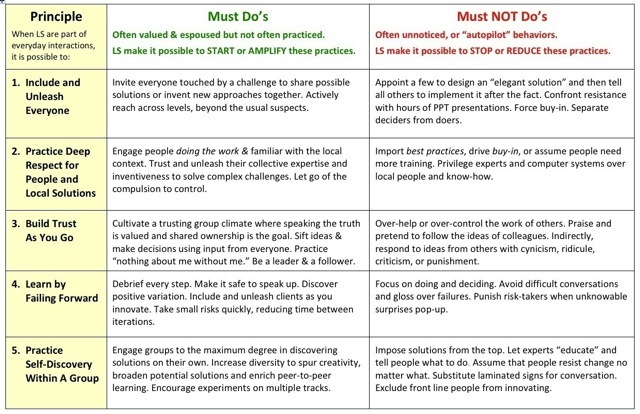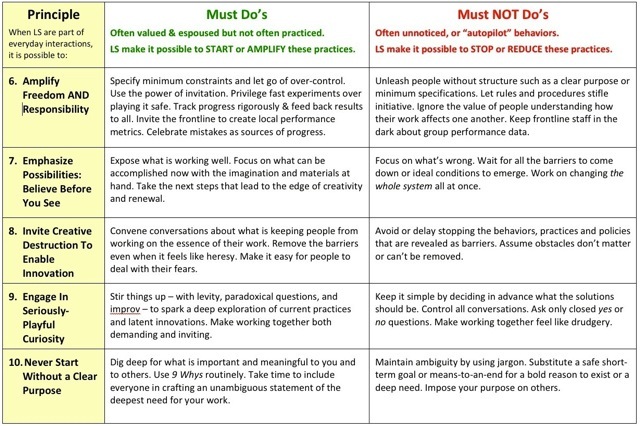Principles
LS principles guide our behavior as we decide that we belong together.
 The ten leadership Principles below highlight what becomes possible when LS are used to structure everyday interactions. Everyday interactions mean meetings, one-on-one conversations, change initiatives, and interactions with clients/users. Principles are rules governing how we can choose to relate to others. They are statements of our beliefs about what helps create great organizations.
The ten leadership Principles below highlight what becomes possible when LS are used to structure everyday interactions. Everyday interactions mean meetings, one-on-one conversations, change initiatives, and interactions with clients/users. Principles are rules governing how we can choose to relate to others. They are statements of our beliefs about what helps create great organizations.
Through thrills and spills of transforming change, we try to live by them.
We define principles as rules governing how we choose to relate to others and statements of our beliefs about what helps create great organizations.
- Include and Unleash Everyone
- Practice Deep Respect for People and Local Solutions
- Build Trust As You Go
- Learn by Failing Forward
- Practice Self-Discovery Within a Group
- Amplify Freedom AND Responsibility
- Emphasize Possibilities: Believe Before You See
- Invite Creative Destruction To Enable Innovation
- Engage In Seriously-Playful Curiosity
- Never Start Without Clear Purpose

Principles in Action
LS come alive through active engagement in practice. Below, in the middle column are statements about what is valued but not often practiced because conventional structures make it too difficult. We call the statements Must Dos to emphasize they guide action and behavior. We call the values espoused because we frequently find, in our fieldwork, a gap between what is said and what is done.
We have come to believe people wish to productively include and unleash everyone but do not know how. Using Liberating Structures makes it relatively easy and practical to start living this principle more fully.
In the right column are statements describing common behaviors and practices. We call the statements Must Not Dos to emphasize that they stifle inclusion, trust, and innovation. We characterize them as unnoticed or autopilot because they are often unexamined habits—so familiar that they are easily overlooked. (If they are noticed, it is by people who are excluded through their practice). Using Liberating Structures makes it relatively easy and practical to stop these behaviors. LS Principles (pdf)



LS Principles (PDF)
Handy PPT file with Principles + Must Dos and Must Not Dos on individual slides.
Many LS users have suggested that the Aristotle research project conducted at Google helps explain the science behind LS. Read about Project Aristotle here.
 Young owls. Photo by Keith McCandless
Young owls. Photo by Keith McCandless
